Red peppers are a standard food item in many cuisines around the world. They are incredibly tasty and nutritious, with many health benefits.
Red peppers are used in salads, as a side dish, for cooked meals, stuffed paprika, and many other recipes. Naturally, we would presume that because guinea pigs are herbivores, we should implement red peppers into their diet, right?
Can guinea pigs eat red peppers? Guinea pigs can eat red peppers, but they can be fed only in moderation or as a treat. It has the highest sugar content out of bell pepper types which is not good if excessively consumed by your pet. However, red peppers contain vitamin C, which is highly beneficial for guinea pigs.
This article will provide you with helpful and detailed information about red peppers and their role in guinea pig’s diets.
Table of Content
Are Red Peppers Good for Guinea Pigs? | Health Benefits
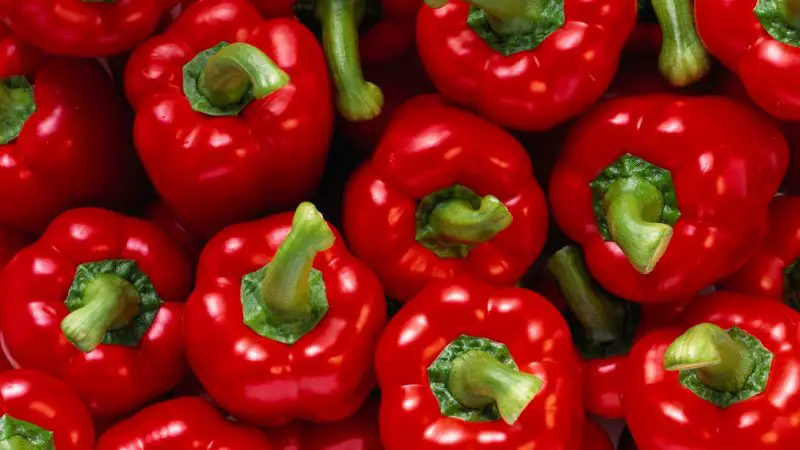
Guinea pigs can consume red peppers safely, and they can get all the benefits of the pepper even from just one slice. A well-balanced diet with various veggies and fruits will provide your guinea pig with all the needed nutrients.
Here are some of the health benefits of red peppers:
Vitamin C and Scurvy Prevention
Guinea pigs do not naturally produce vitamin C, and without this vitamin, they are prone to a fatal disease called scurvy. So, guinea pigs must receive it through foods or supplements.
Red peppers are packed with vitamin C, and they can help prevent scurvy disease. The following are the symptoms of scurvy: diarrhea, rough fur, bleeding, no appetite, and discharge.
Healthy Blood
Red bell peppers can have many benefits for guinea pig’s blood as they are rich in iron. They are helpful when it comes to the prevention of anemia. Also, iron works well in combination with vitamin C as it helps with its absorption.
Antioxidants
Vitamin A in red peppers acts as an antioxidant and keeps the health of the brain, kidneys, lungs, skin, heart, and eyes. Manganese also acts as an antioxidant and reduces the risk of all diseases that could appear due to free radical damage, and it also regulates blood sugar.
In general, vitamin A and manganese in red peppers are good protectors of overall health and immunity.
Good for Digestion and Weight Control
A proper amount of fibers in red peppers will regulate bowel movements and improve digestion. Also, red peppers are not a threat to rapid weight changes due to the low amount of calories. They are not fattening for guinea pigs.
Red peppers also have a small amount of fat, making it an overall safe food for the guinea pigs. High amounts of fat are harmful to the blood vessels and cardiovascular health.
Other Benefits
Many other vitamins are good for guinea pig’s overall health, such as the following:
- Vitamin K helps produce prothrombin, the protein that clots blood when injuries happen.
- Vitamin E is essential for skin health, as it slows down aging, boosts the immune system, and reduces inflammation.
- Vitamin B6 can make your guinea pig happier and well-rested! Yes, this vitamin boosts serotonin production (happiness hormone).
- Thiamin, also known as B1 vitamin, promotes a good flow of electrolytes to all nerves and muscles and converts everything consumed into energy.
- Riboflavin, known as B2 vitamin, converts food into energy, but it also promotes good oxygen flow in all of the cells.
Nutrition Facts of Red Peppers for Guinea Pigs
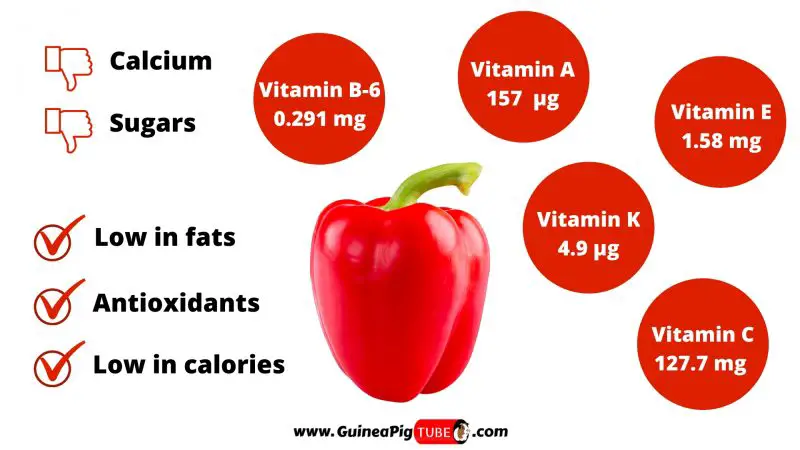
The following are the nutrition facts for the 100 g (3 oz) of sweet raw red pepper:
- Energy – 26 kcal
- Protein – 0.99 g
- Total Lipid (Fat) – 0.3 g
- Carbs – 6.03 g
- Dietary Fiber – 2.1 g
- Sugars – 4.2 g
- Calcium – 7 mg
- Iron – 0.43 mg
- Magnesium – 12 mg
- Potassium – 211 mg
- Zinc – 0.25 mg
- Copper – 0.017 mg
- Manganese – 0.112 mg
- Vitamin C – 127.7 mg
- Vitamin B6 – 0.291 mg
- Vitamin A – 157 µg
- Vitamin E – 1.58 mg
- Vitamin K – 4.9 µg
- Thiamin – 0.054 mg
- Riboflavin – 0.085 mg
Risks to Consider When Feeding Red Peppers to Guinea Pigs
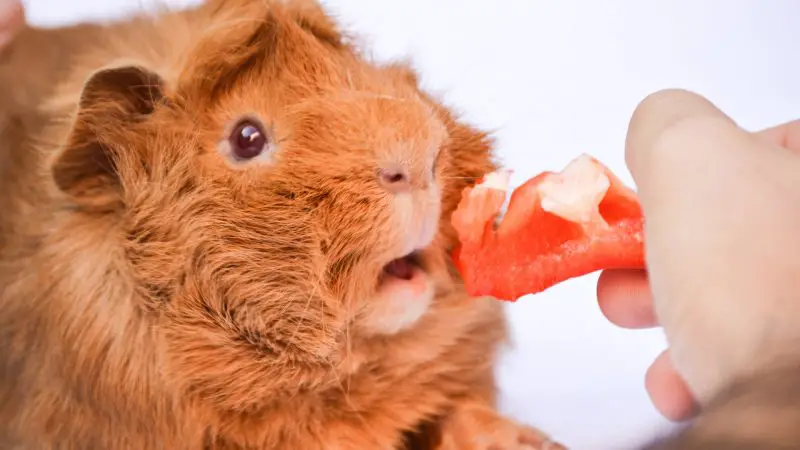
Painful Digestion
The sugar content in red peppers is quite high. This can consequently cause an upset stomach, flatulence, and cramps during digestion because guinea pigs cannot digest the sugars well, even from natural and raw foods.
Excess sugar causes pains and digestion problems for guinea pigs.
Urinary Problems
Calcium is a mineral that forms strong and healthy bones. However, too much calcium is harmful to fully-developed guinea pigs as it can cause urinary complications. This mineral can cause urinary stones, infections in the urinary system, bloody urine, and renal failure.
Serving Size and Frequency of Red Peppers for Guinea Pigs
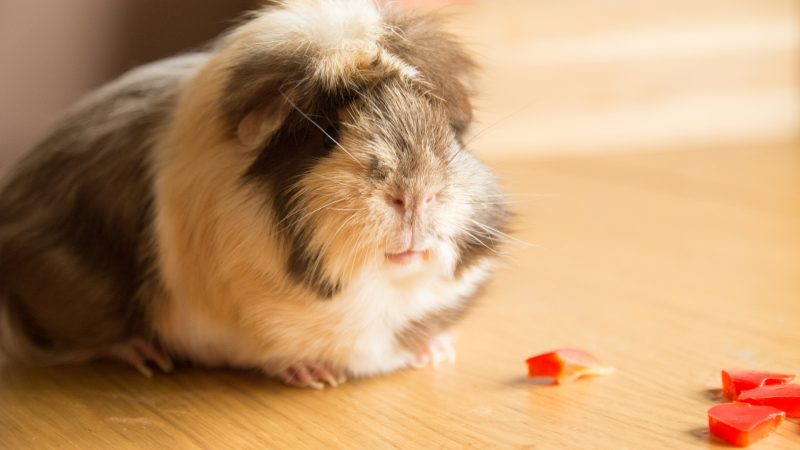
Can Guinea Pigs Eat Red Bell Peppers Every Day?
Guinea pigs shouldn’t eat red peppers every day. A few times per week is good for them to benefit from a good amount of vitamin C and other important vitamins and minerals.
Some owners feed their guinea pigs with red peppers almost daily, but this is not recommended due to the sugar and calcium amounts.
Also, there are other fruits and vegetables that you can feed them with, such as green peppers, yellow peppers, and orange peppers. It’s good to provide them with a versatile diet and not feed them the same food every day.
Can Guinea Pigs Eat a Whole Red Pepper?
Guinea pigs can’t eat the whole red pepper at once. The serving size should be just one or two slices of red pepper.
Red peppers contain more sugar than green or yellow peppers, and because of that, you need to be careful with the serving sizes of red bell peppers for guinea pigs.
Sugars can be very dangerous to the guinea pig’s digestive system if fed in large amounts. Sometimes it can even lead to obesity or diabetes.
A whole red pepper is too much for one guinea pig, as there are also other foods such as hay and pellets that they need to eat daily.
Do Guinea Pigs Like Red Peppers?
Guinea pigs like to eat red peppers and they really enjoy them. Red bell peppers are sweeter than the other types of bell peppers, so they will be very delicious for them.
However, some guinea pig owners have reported that their pets don’t like red peppers, which is normal because every guinea pig has their own personal taste preference.
Try giving two of your guinea pigs the following fruits or vegetables: spinach, broccoli, tomatoes, kale, zucchini, apples, blueberries, and so on. The two of them may have different preferences, and they are very similar to humans in that regard.
Here are some other fruits and vegetables that a guinea pig can eat:
More Information About Guinea Pigs and Red Peppers
Can Guinea Pigs Eat Sweet Red Peppers?
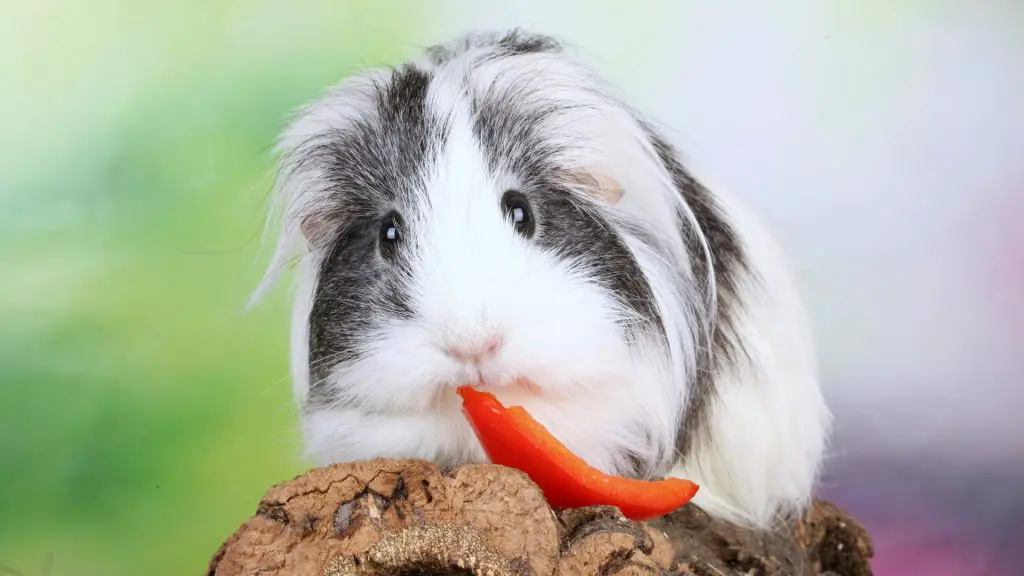
Guinea pigs can eat sweet red peppers, and sweet pepper types are the only ones safe for them.
There are also hot chili red peppers that aren’t safe for guinea pigs because they can cause serious problems to their’s stomach and digestive system.
Don’t feed guinea pigs with any spicy food or spicy peppers, such as jalapenos peppers, because their digestive system is very sensitive.
Can Guinea Pigs Have Red Bell Peppers Seeds?
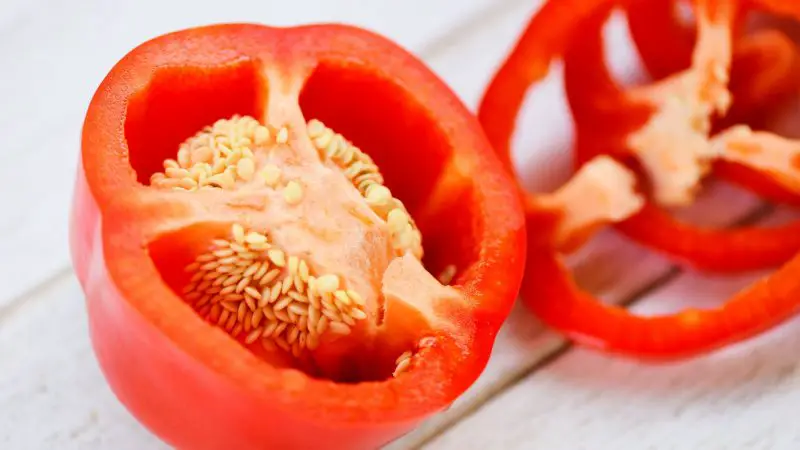
Seeds of red bell peppers are soft and small, and they are not poisonous to them, but there is a possibility of a choking hazard. It’s better to remove all the seeds from the red bell peppers and peacefully watch your guinea pig while it devours the pepper.
Can Guinea Pigs Have Red Peppers Stems?
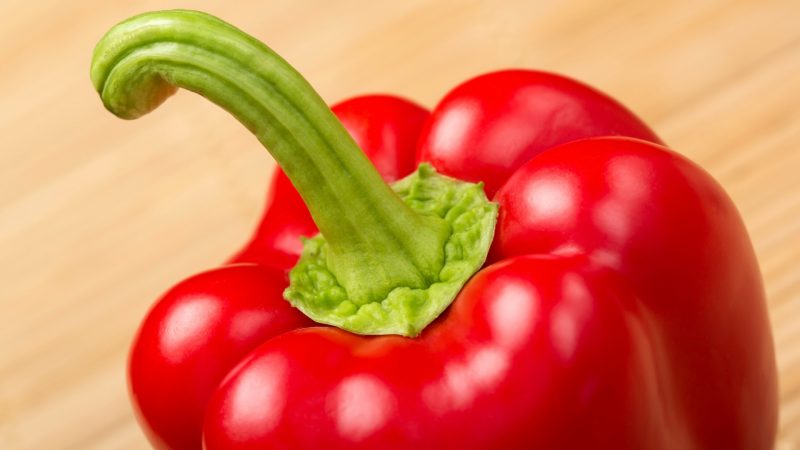
Guinea pigs shouldn’t eat red pepper stems because of the alkaloids present in them. It can be dangerous to guinea pigs if fed in large amounts.
Similar to the red pepper seeds, it is also best to remove the stem of the red bell peppers.
Generally, when preparing any vegetable or fruit, you should wash it thoroughly due to the possible pesticide presence and then slice it into smaller pieces before giving it to guinea pigs.
Quick Facts On Red Peppers
- Red peppers are just green peppers that were left to ripen.
- Technically, the red peppers are a fruit, but we refer to them as veggies for culinary purposes.
- The red peppers are the sweetest out of all pepper types.
- Red pepper has more vitamin C than green pepper.
- Peppers are native to South and Central America.
- The oldest pepper was found in Oaxaca and Puebla, Federal Districts of Mexico.
- Bell pepper seeds were carried to Spain back in 1493, and after that, they were brought to other countries in Europe and Asia.
- At first, peppers were highly unpopular in Europe.
- Apart from red and green peppers, there are also other colors such as yellow, orange, white, brown, purple, and lavender.
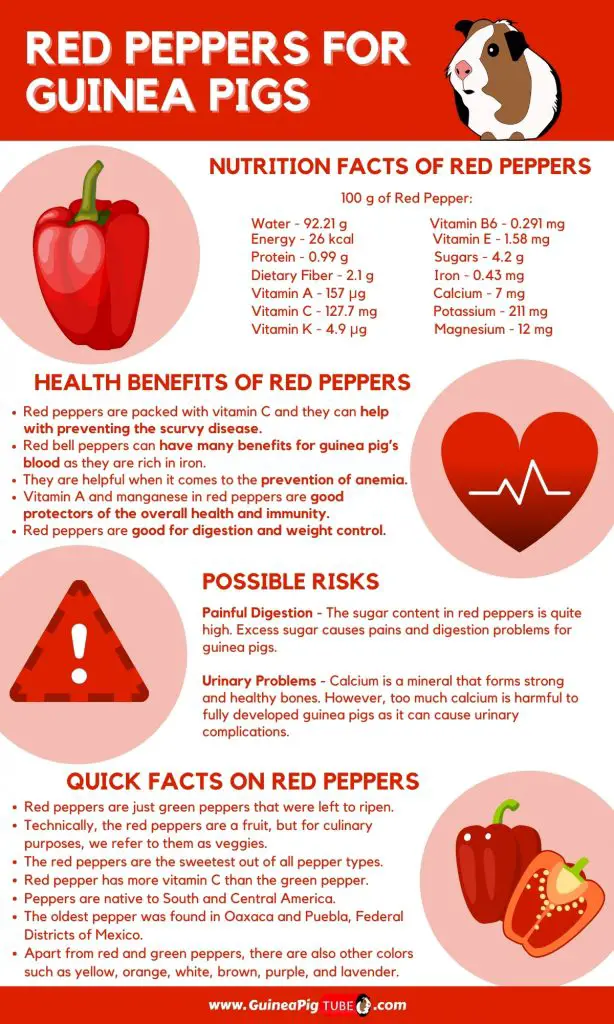
We have also made a full list of foods that guinea pigs can and can’t eat (150+ Types of Foods). Be sure to also check our recommended products page for everything you will ever need to assure a happy life for your guinea pigs. Hope this information was helpful and you have found the answer you were looking for.
List of Sources
The Nutrition Source: Vitamin A
Antioxidant Effect of Manganese
FoodData Central: Peppers, Sweet, Red, Raw
